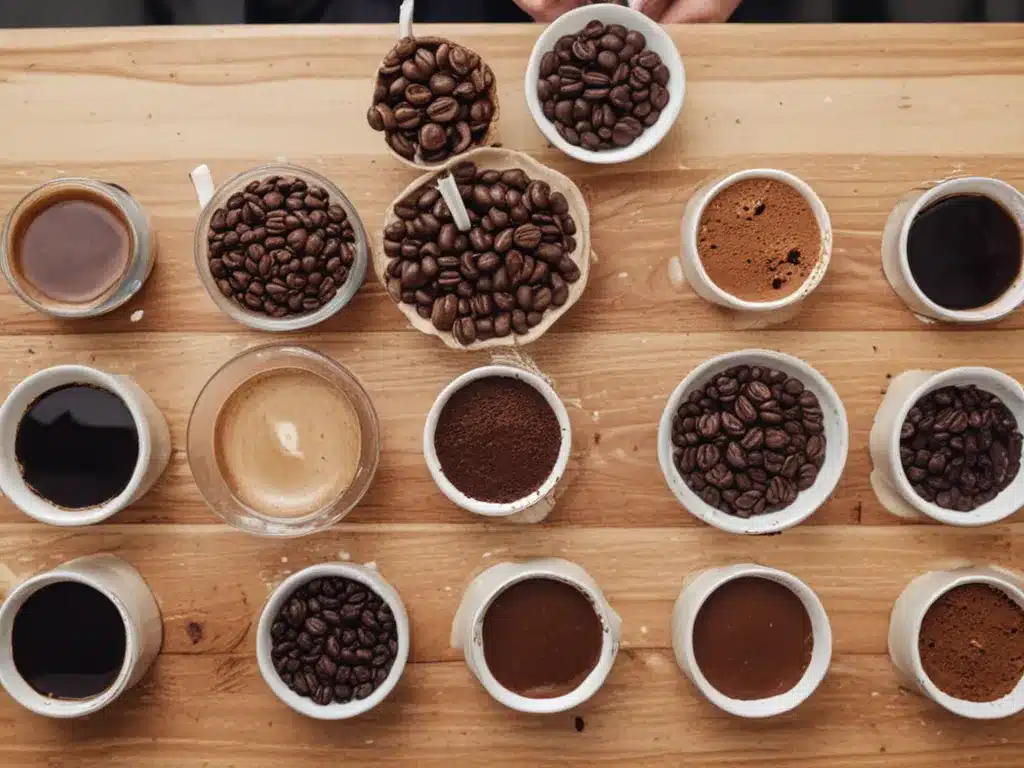
I’m excited to provide you with an introduction to coffee tasting and exploring the nuanced flavors that make each coffee unique. As a beginner, learning how to recognize and appreciate the complex tastes and aromas in a cup of coffee will enhance your enjoyment. I’ll cover the key concepts and techniques to get started.
The Goals of Coffee Tasting
Coffee tasting, also called cupping, allows us to identify the tasting notes and texture of a coffee by systematically evaluating its aroma, flavor, aftertaste, and body. The goals include detecting subtle flavors, assessing quality, comparing different coffees side-by-side, and simply enhancing how we appreciate and experience a cup of coffee.
Developing your palate takes time, but the joys of discovering flavors like bright citrus, rich chocolate, or earthy spice make the journey worthwhile. With practice, you’ll learn how processing, origin, roast level, and brewing all impact a coffee’s final profile.
Equipment Needed
Coffee tasting requires minimal equipment, making it easy to start:
- Cupping spoons – These shallow spoons allow you to precisely slurp small amounts of coffee.
- A cupping bowl or clear drinking glass – To evaluate aroma, transparent vessels are ideal.
- Coffee samples – Have several coffees to taste and compare side-by-side.
- A cupping form – Used to record your observations about each coffee’s qualities.
- Grinder – Freshly ground coffee is ideal to prevent flavor loss after roasting.
- Kettle & thermometer – Water should be just off boiling, around 195-205°F.
- Timer – Important for timing key stages like brewing, cooling, and aroma evaluation.
The Cupping Process Step-By-Step
Follow this structured process to systematically taste and evaluate a coffee:
-
Grind your coffee samples to a medium-fine consistency. Measure out equal amounts.
-
Brew by adding hot water to grounds in cupping bowls/glasses. Let steep for 3-5 minutes.
-
Break crust that forms on the surface and allow to cool to 140°F or until no steam rises.
-
Evaluate aroma by deeply inhaling the fragrance. Record impressions on cupping form.
-
Slurp a full spoonful to aerate and spread across palate. Note flavor, acidity, and body.
-
Score each coffee on the cupping form. Compare to other samples.
Take detailed notes on the cupping form to compare coffees and remember what you tasted!
Detecting Flavors and Describing Tasting Notes
Expanding your mental flavor library just takes practice. Here are some tips:
-
Try single-origin coffees to understand region-specific characteristics.
-
Cup coffees side-by-side to contrast flavor profiles.
-
Focus on describing both aromas and tastes.
-
Use vivid descriptors like “juicy, syrupy, velvety, brisk, etc.”
-
Consult the coffee flavor wheel for inspiration on tasting notes.
-
Compare to more familiar flavors like fruits, nuts, spices, or chocolates.
With time, you’ll grow more comfortable detecting subtle flavors and learning each coffee’s story.
Enjoy the Journey!
That covers the key concepts to begin your coffee tasting adventure. Remember to have fun and not get overwhelmed. Tasting is a lifelong learning experience. Soon you’ll be discovering amazing cups and new flavor insights to share with fellow coffee lovers.
Let the cupping begin, and be sure to stop by Geocuisine Bayridge where I can help you select unique coffees to evaluate and expand your palate!



















